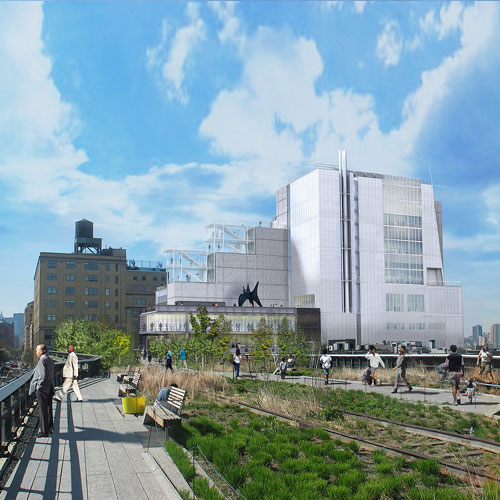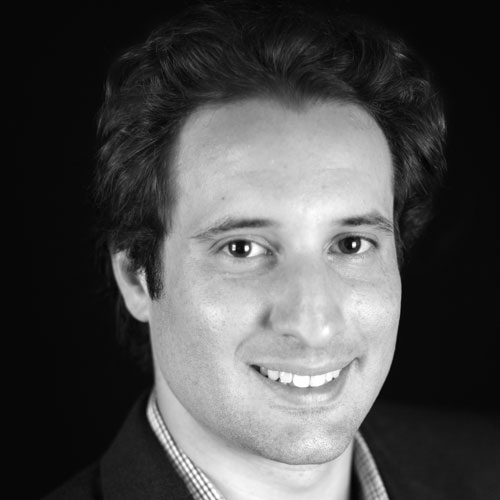First, talk a little bit about your background.
I’m a Mississippi native. I was born and raised [there]. I attended Mississippi State. That had an impact. I got a very good architecture education there; my professors influenced me, especially Samuel Mockbee, who later founded the Rural Studio at Auburn University.
How did he influence you?
I worked most especially with him through my fifth-year thesis project. He was one of my critics. I was able to learn a lot from him that way. The subject of my fifth-year thesis project was “Building in the Wilderness Environment.” The ideals that informed my designs at that time are still important to me now—treading lightly on the landscape and integrating designs within their specific environment.
From Samuel, I learned a strong sense of regionalism and a belief that all people, not just the wealthy, deserve an architect’s best effort. Ever since I started my firm, I have had a constant stream of nonprofit clients.

When Corban and his wife, both sailors, set out to find a house on the water, what they stumbled on was a unique site with a small cove and an old boathouse built on top of it. The siting and the footprint of the boathouse, which the couple occupied until their daughter came along, gave the home its striking vertical profile, and its position over the water helps it catch naturally cooling breezes, which are further enhanced by operable windows, an operable shade structure, vented skylights, and 5- to 12-foot overhangs. The home takes design cues from the traditional fish camps found throughout South Florida, and it was recognized as one of the 100 best Florida buildings of the past 100 years by the Florida chapter of the American Institute of Architects. (Photo: Ed Chappell)
So how did you end up going from Mississippi to Florida?
After finishing school, I moved to Florida. My grandparents had always vacationed in Florida, and we came down here for spring-break holidays and I liked it; I liked the beach and the Everglades. And, when I finished school, there was a construction downturn in Atlanta and Birmingham—areas where, traditionally, Mississippi State graduates go.
So, I had worked a couple of summers down here in Florida at a firm in Ft. Meyers. After I graduated, in 1990, I was offered a job at that firm that lasted for about a year and a half. And then I started at [Andrea Clark Brown Architect] in Naples and worked there for more than four years. Following that, I became a partner at [Architectural Network] in Naples. I was there for about eight years and built that up into a very successful, award-winning architecture firm. And then, about eight years ago, I decided that I would do best and have the most success and opportunity for doing good design on my own.

How would you describe your approach on your own?
We [architects] always have an obligation to our clients, but also there is a kind of unspoken obligation to the larger community and to the environment. So, I feel strongly that buildings have to respond to the environment. As architects, we have to take a leading role in combating climate change because buildings and architecture are some of the largest users of fossil fuels. So, it’s important, whether it’s in the program or not, to create buildings that are built for their environment. And, I also think our buildings should be a good player within the community. I don’t think we should do buildings that call a huge amount of attention to themselves. They should be part of the context, whether urban, a natural context, or a more pristine environment.
How does the context of Southwest Florida and its landscape inform your work?
I think what we’re trying to do as an architectural firm is appropriate to the Florida landscape. For instance, with Grace Place, we could have done a large 15,000-square-foot single building, but this nonprofit organization is located in the middle of a single-family neighborhood, so we wanted to give it a more residential scale. Also, some of the residential projects we’ve done are more appropriate to the Florida landscape than the kind of mini-castles—the kind of Noveau-Mediterranean buildings that look like they belong in Spain or the east coast of Florida more than the west of Florida. So, I think the projects we’ve done fit better in the Florida landscape. Buildings that are intended for Florida are a fairly new thing, and I think it probably started with Seaside, up in the panhandle, going back over 30 years ago. It was the start of people embracing an architecture that belongs in Florida. That style of architecture is more historically generated architecture than what I’m trying to do, however. I want to use the materials and scale of the Florida vernacular … but do it in a 21st-century method, using contemporary materials and things that we have available to us now. So, I suppose it’s kind of a modern vernacular.
What are some of your proudest moments so far as an independent architect?
Probably the biggest one would be when my home [Haldeman Creek House] was selected by the AIA Florida as … one of the top 100 buildings in the last 100 years. So, it’s right up there with some Frank Lloyd Wright buildings and Paul Rudolph. I was very flattered to get that award and that recognition.

In Florida, hurricane codes require homes to be built to withstand 175 mph winds, with windows that can’t be shattered by flying objects, so the common architectural approach is to use small windows and heavy construction. Corban’s 4,500-square-foot seasonal Old Naples home, though, built for a Washington, DC-based couple, is a light and airy structure designed to stand out from the crowd with contemporary architecture, natural materials, and carefully engineered floor-to-ceiling windows that offer unobstructed views. (Photo: Ed Chappell)
What about bigger projects?
The Cambier Park Bandshell—it has kind of become an icon of Naples. I think everyone knows that structure, and we won a state excellence in architecture award for that. We found a way to come up with something interesting; we found things in the program and the building to do a piece of architecture that solves more problems than what people expected from it. It was really just supposed to expand the space and add some bathrooms, but we also improved the acoustics and provided a building that forms an entrance from Fifth Avenue into the park.
Where is your practice now, and where is it going?
When I first started practicing on my own, it was probably the worst time in the world to do that. We were at the bottom of the market; Florida was at the top of the foreclosure issue, and there was just not much work to be had out there. But, we pushed through it by building relationships and working with nonprofits. When you don’t have a lot of work, I think it’s good to do pro bono work so that you’re keeping busy and creating relationships, even when you’re not getting paid for it. So, that’s paid off for us, and now we’re six people, which is not large by many standards, but we’re very busy now. We’re doing interesting projects, and people are coming to us for the work we’re doing, … saying, “We’re looking for that type of architecture.” That’s a place where an architect wants to get to, where people aren’t just finding you in the phone book and saying, “Okay, draw up some blueprints”—instead, they’re saying, “I like the work you do; I’d like you to do this project for us.” That’s where we’re at now; I think that’s a good place to be, and we’d like to continue along that path, to continue to work with clients who feel the same about architecture and the built environment as we do—and continue to improve the landscape of Collier County, South Florida, and further out if possible.
[Ed. note: Since the release of David Corban’s feature for American Builders Quarterly, he has won two awards for a new project, the Immokalee Zocalo. His plans for the job won an Excellence in Design award from the Florida Southwest Chapter of the American Institute of Architects and an Audrey Nelson Community Development Award from the National Community Development Association.]


